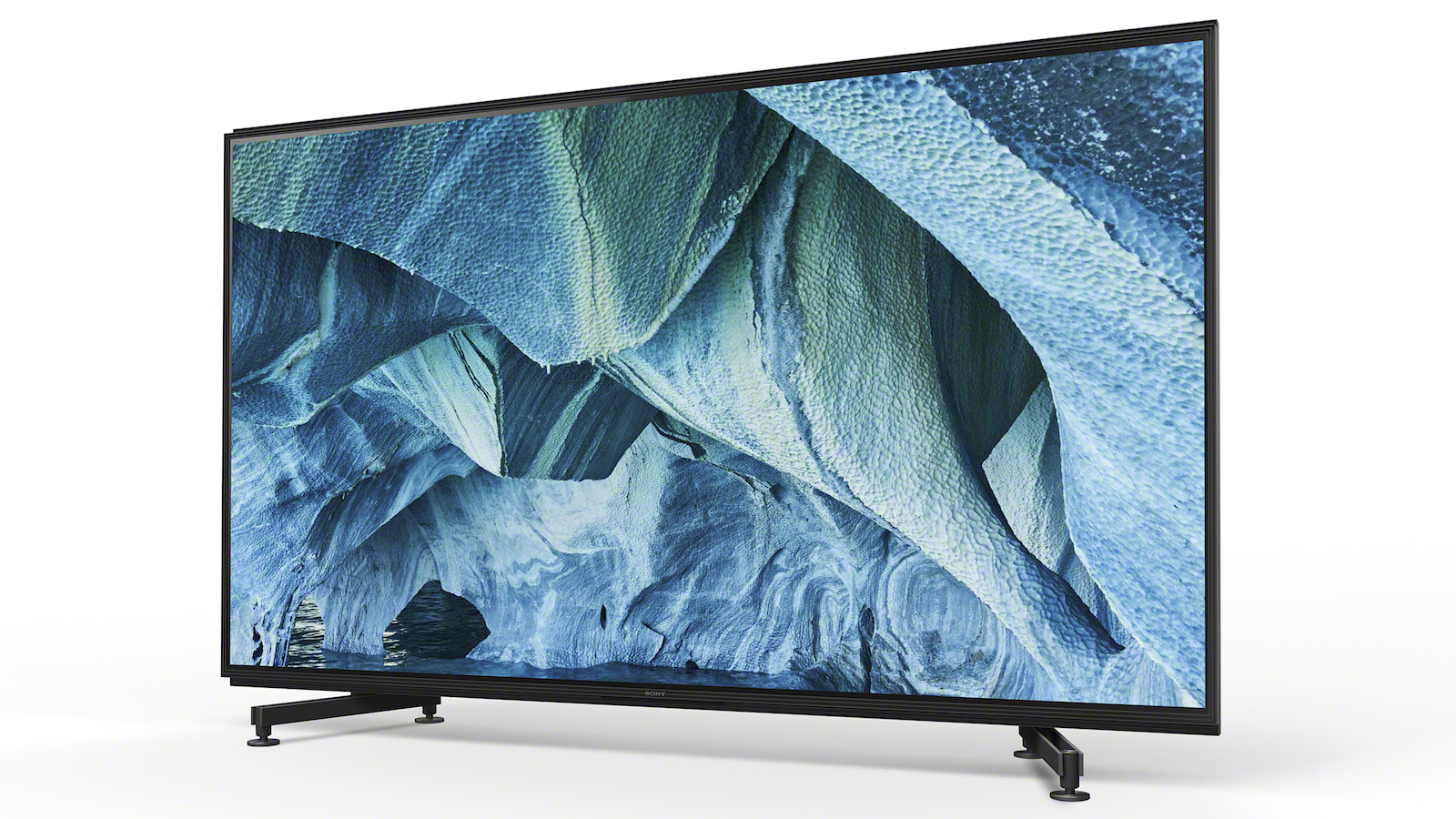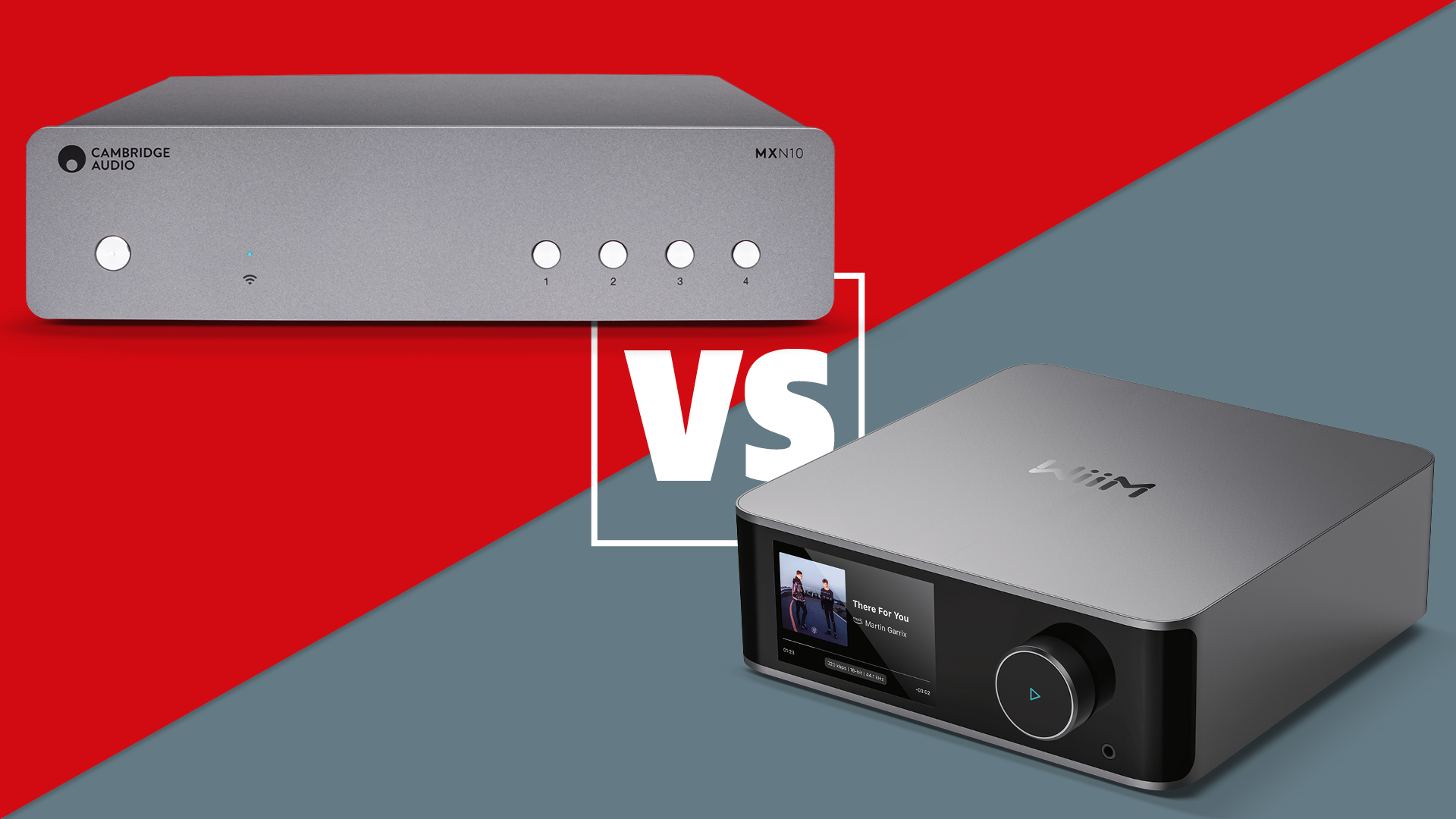What Hi-Fi? Verdict
Impossible to justify for all but a lucky few, the ZG9 is nevertheless a beautiful benchmark for 8K TVs
Pros
- +
8K is utterly stunning
- +
Punchy, vibrant and natural
- +
Excellent motion
- +
Very good sound
Cons
- -
No 8K content
- -
Hugely expensive
- -
Blacks could be deeper
Why you can trust What Hi-Fi?
We’re in a real chicken and egg situation with 8K. Without more 8K TVs being sold, no one will be interested in streaming or broadcasting 8K content. And while there’s no 8K content to watch, few people can justify the extra outlay for an 8K TV.
And we are talking about a huge outlay. The Sony ZG9 is available in two sizes, the biggest of which (98in) will set you back £85,000. The smaller, 85in ZG9 is cheap by comparison, but at £14,000, it’s still £9000 more expensive than Sony’s top 4K LCD, the KD-85XG9505.
In other words, you’ve got to really want to be at the bleeding edge of TV tech and need to have extremely deep pockets. But if those two statements describe you, there’s really no downside to the KD-85ZG9. If we were in the market for an 8K TV, this is the one we’d buy.
Build
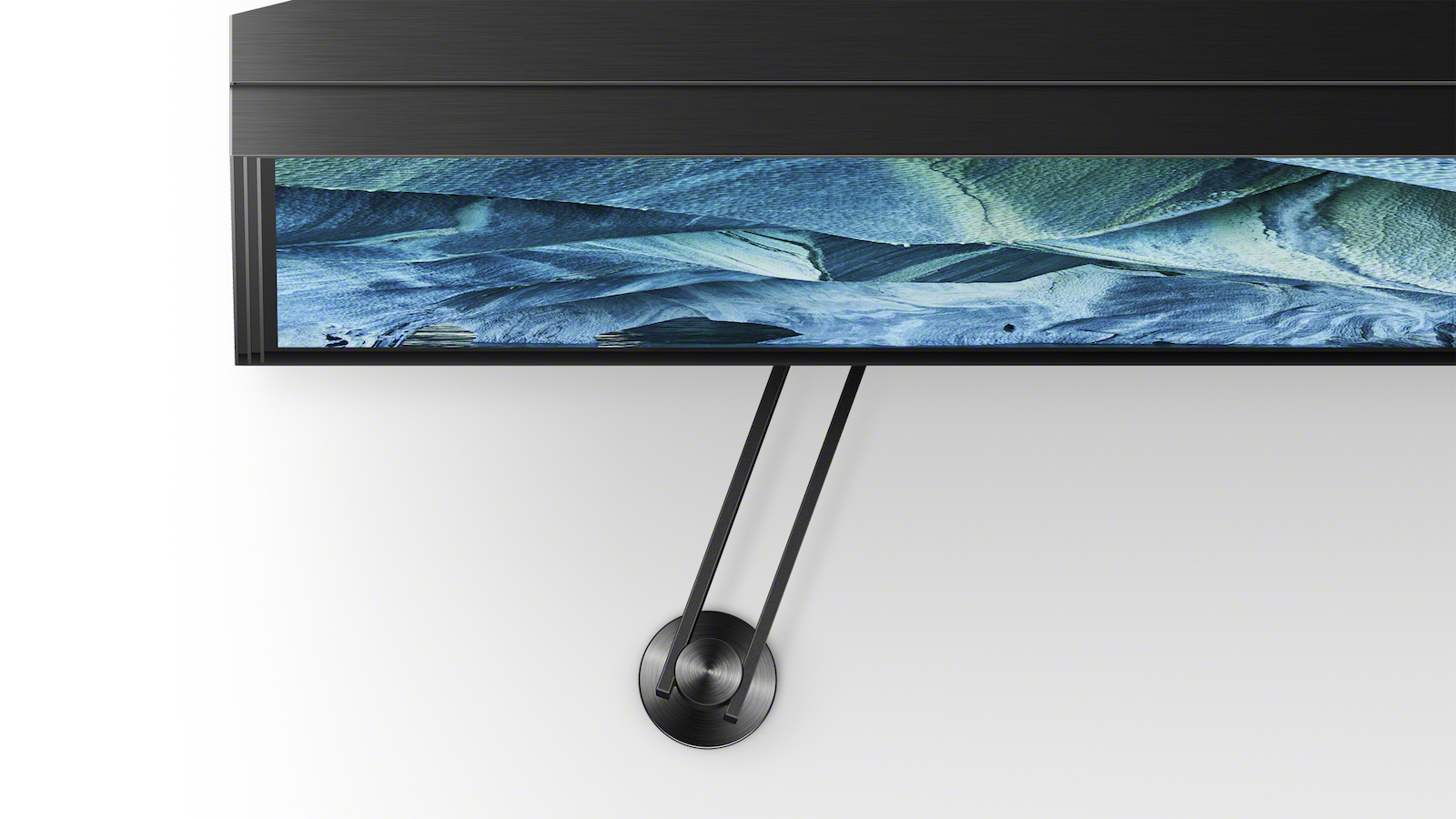
The ZG9, even in the smaller 85in size, is huge and imposing. What’s refreshing is that Sony hasn’t attempted to disguise the set’s bulk, instead coming up with a design that makes a virtue of it.
With its straight lines, sharp edges and chunky panels, it has an industrial aesthetic, but is elegant too, with the stylishly utilitarian feet a particular highlight. With the 98in model, you get legs, rather than feet, allowing the TV to stand in free space.
The ZG9 is designed to look good from all angles, with panels and channels around the back hiding connections and cables, and a chequerboard pattern making the rear a little more interesting than usual.
It’s a deep set, of course, with the depth measurement of 12cm dwarfing the 3.6cm thickness of Samsung’s QE85Q900R 8K model. Both models are LCDs with direct LED backlights, which makes OLED-slimness impossible, but the extra thickness of the Sony over the Samsung is accounted for by the connections and electronics being housed in the main chassis (the Samsung has an external ‘One Connect’ box), and that Sony has built in more, and bigger, speaker drivers than usual.
These drivers are forward-firing and built into the bezels at the top and bottom, so they need to be thicker, too. This aspect of the design is nicely handled, with a step splitting these bezels and giving the TV the look of an inverted frame. There are no flat surfaces on the front, with straight ‘blades’ instead. These allow sound to escape while also acting as heatsinks, doing the same for the warmth generated by the internal components.
Elegant it may be, but this Sony TV will still dominate any room. That said, the matte black finish helps it to disappear in lower light. But when the lights go down, boy, does the ZG9 provide a cinematic experience.
Features
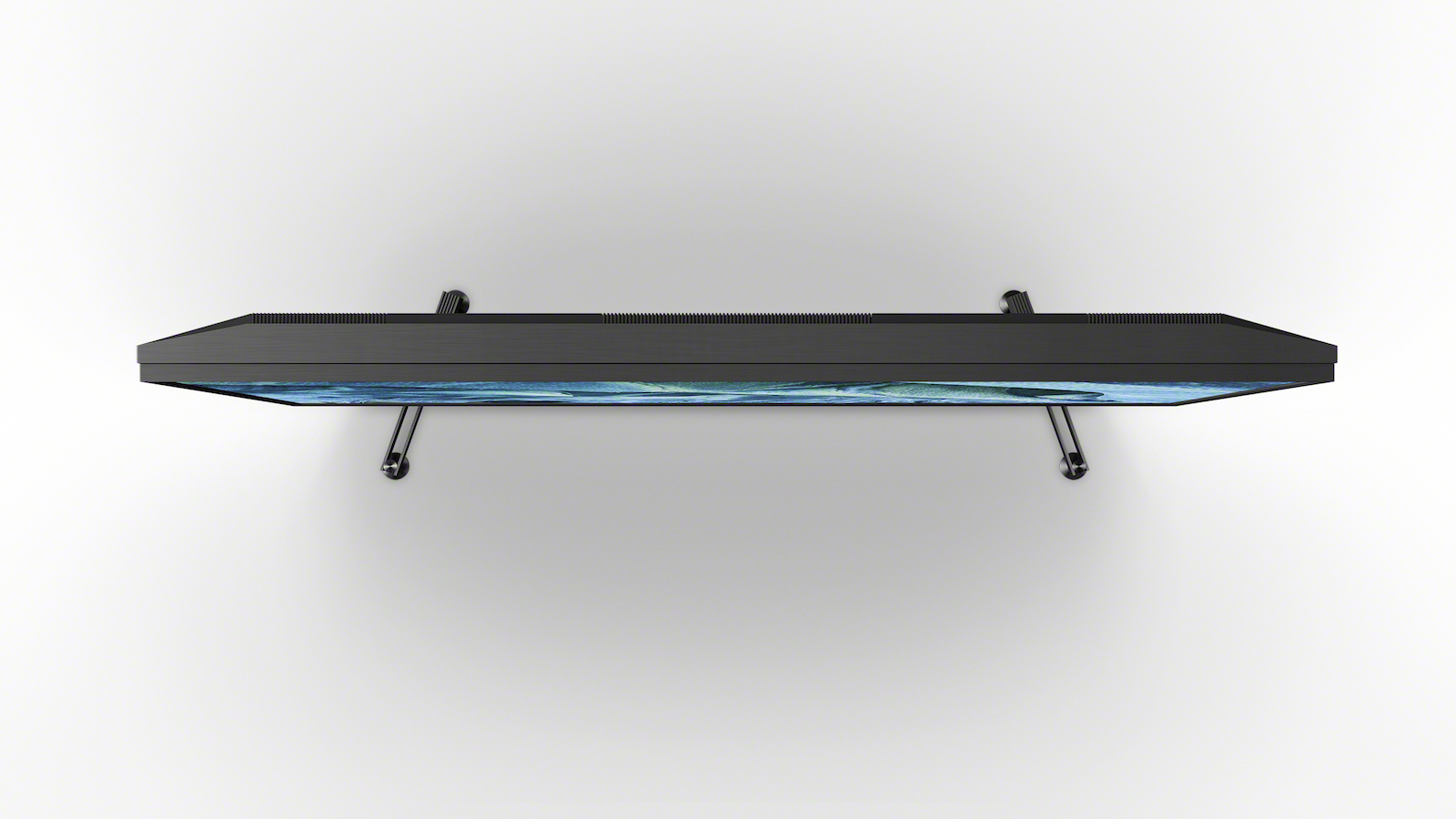
Sony is making a big deal of the importance of pixel density, much as Samsung did when it launched its 8K sets towards the end of 2018. While this is a measurement more commonly associated with phones, pixel density is a compelling way to express the importance of increasing the resolution as TVs get bigger.
A 65in 4K TV has a pixel density of just under 68ppi (pixels per inch). Enlarge the TV to 85in without changing the resolution and the pixel density drops to a little under 52ppi, making the image less sharp. That’s where 8K comes in – the 85in ZG9 has a pixel density of nearly 104ppi, double that of an equivalently sized 4K model.
Of course, to properly take advantage of that extra pixel density, you need 8K content, and that’s where the problem lies. Currently, there is none – and we don’t even have a date for its arrival. Strictly speaking, we don’t even have a guarantee that when 8K arrives it will do so in a format that these first 8K TVs can handle.
We expect that streaming services such as Netflix and Amazon will handle the hard work of compatibility, but there’s always the chance that an app update will be required and that it may not arrive on the earliest TVs. It's the same situation in which many buyers of early 4K TVs found themselves a few years ago.
You should be able to receive 8K via an external source, such as a streaming stick or PVR: while the ZG9’s HDMI sockets are officially 2.0-certified, Sony says they’re HDMI 2.1-spec and will soon be fully certified, though it may need a software update.
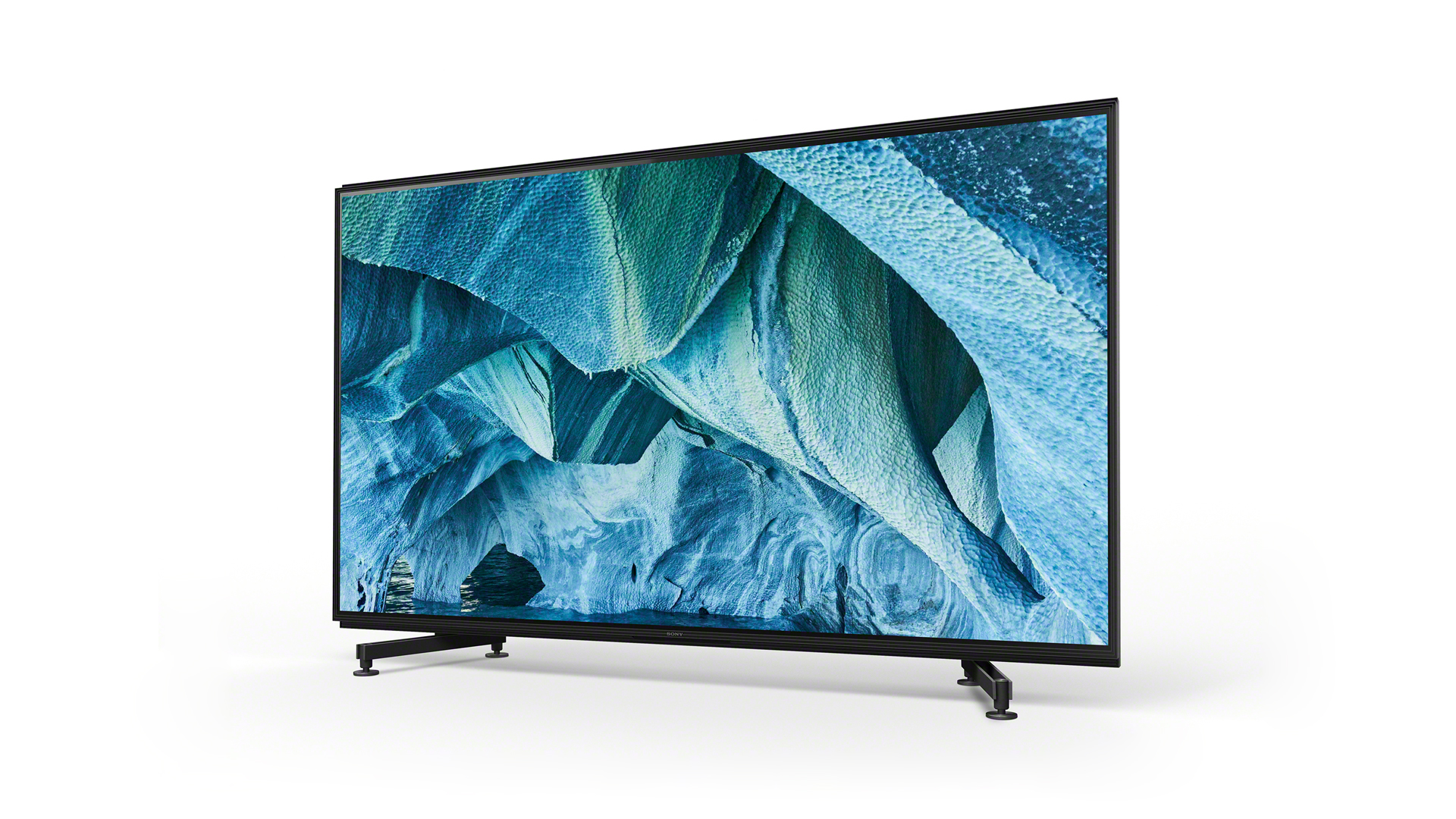
Screen type LCD with direct LED backlight
Resolution 8K
Operating system Google Android TV 8.0
HDR formats HDR10, Dolby Vision, HLG
HDMI 4
USB 3
Optical 1
Making the most of the non-8K content we currently watch is obviously paramount, so while the ZG9 uses the X1 Ultimate chip already seen in a number of Sony’s 4K models, certain features have been boosted to make the most of the 8K panel.
8K X-Reality Pro takes care of the upscaling, using a new, dedicated 8K database for more precision and detail, while 8K X-tended Dynamic Range Pro boosts brightness when necessary in specific areas and works in conjunction with the Backlight Master Drive feature, which independently controls the backlight's LED zones. For what it’s worth, Sony isn’t being specific about the number of zones the ZG9’s backlight has, or even how bright it will go.
Other features of the X1 Ultimate chip include X-Motion Clarity, which is the latest version of the company’s much-loved motion processing, and X-Wide Angle, which is designed to improve viewing angles compared with other backlit TVs.
If you’re expecting a special user experience, you’re likely to be disappointed that the ZG9 gets the same Android TV 8.0 operating system as its 4K siblings in Sony’s 2019 line-up. It’s not that Android TV is particularly bad, but it is more cluttered and less swanky than rival operating systems from Samsung and LG.
It is at least snappy and responsive on the ZG9, and interactions with the TV are further enhanced by Sony’s (long overdue) new remote, which feels nice in the hand and has sensibly laid-out, satisfyingly clickable buttons.
Of course, with Android TV comes Google Assistant, and the ZG9 is ‘Works with Alexa’-certified, too. What’s more, Sony has built a microphone into the TV’s bottom bezel (as well as in the remote) making full hands-free operation an option.
During testing, we find the ZG9 responsive to voice commands, whether it's requests for useless bits of trivia, instructions to play particular shows from Netflix or Amazon, or commands to control Philips Hue lights.
Android TV also supports lots of apps, including Netflix and Amazon Video (both in 4K and Dolby Vision) for subscription-based streaming, Google Play Movies & TV (in 4K and HDR10) and Rakuten (HD-only) for pay-as-you-go movies and TV shows, Plex and VLC for playing your own files, and Spotify, Tidal and Deezer for music.
While Android TV itself misses a few catch-up apps, Sony has added YouView, ensuring you get the full selection – BBC iPlayer, ITV Hub, All 4 and My5. The only app absence of any real significance is that of Now TV, for subscription-free streaming of Sky content. The TV does have Chromecast built-in, though, so it is possible to ‘cast’ Now TV from your phone or tablet.
Sony continues to offer broad format support in 2019, so you get HDR in its HDR10, Dolby Vision and HLG forms, plus Netflix Calibrated and IMAX Enhanced modes for making the most of Netflix Originals and IMAX Enhanced discs. The only disappointment is a lack of HDR10+, the rival format to Dolby Vision.
We can’t see too many potential buyers being put off by its exclusion, at least while HDR10+ content remains thin on the ground, but with Panasonic and Philips offering both formats on most of their 2019 sets, any manufacturer that continues to offer one and not the other is inevitably going to cop at least a little flack.
Picture
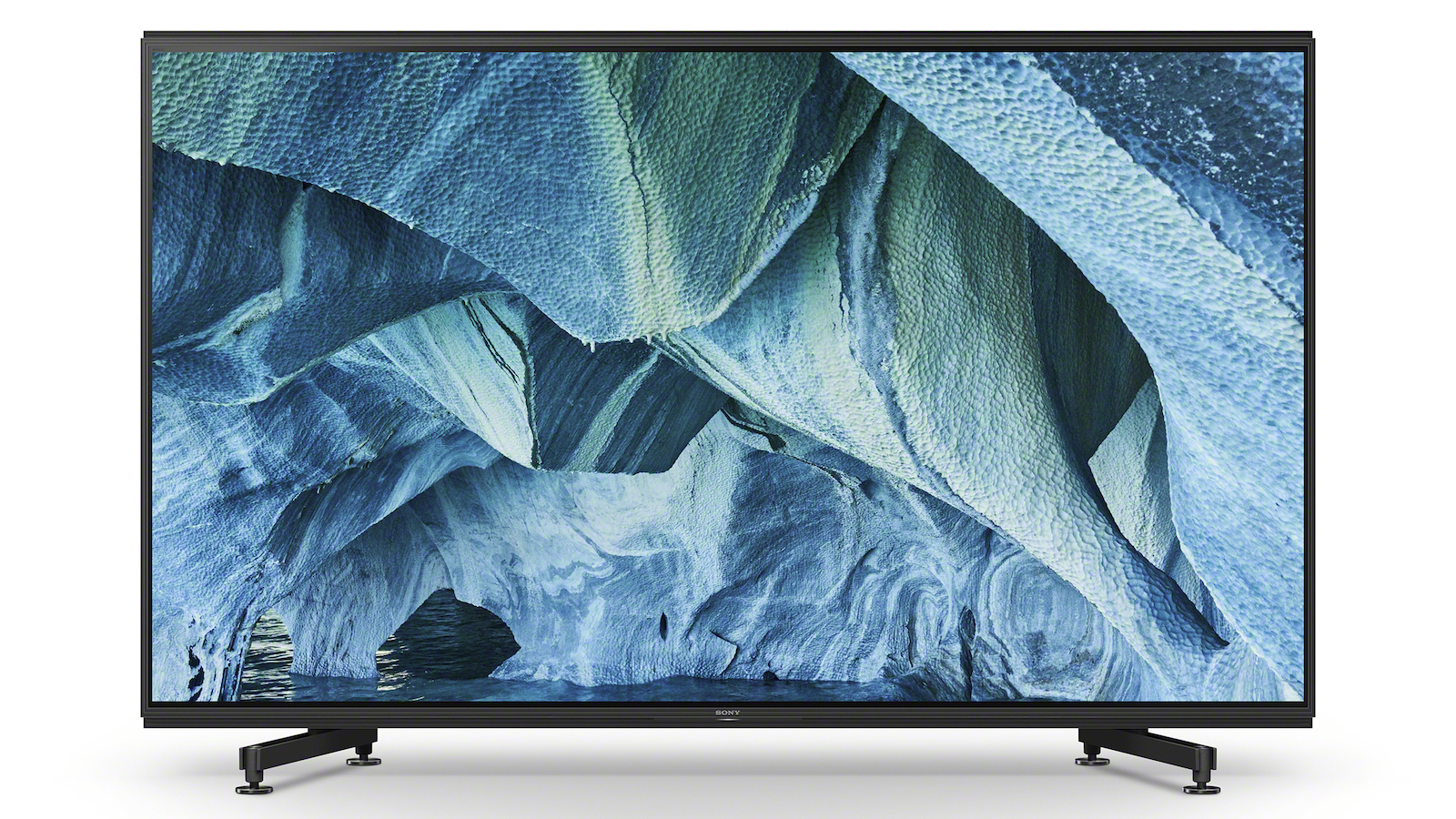
With no ‘real’ 8K content available, we’re limited to demo footage, just as we were when we reviewed the Samsung QE85Q900R. Unfortunately, it’s not the same content, but it is glorious.
The reel opens with footage of Rio Carnival and it’s an absolute feast for the eyes, bringing to life the spectacle of such an event in a way that perhaps no other TV could. It’s punchy and vibrant, of course, which is essential to do justice to the colourful costumes on display, but it’s the detail and crispness on offer that takes things to the next level. The image is incredibly solid and lifelike, drawing you into the action and transporting you to the buzzing, thumping streets.
Much is being said about the sort of distances required to make the most of 8K content, and it’s true that the closer you sit the more spectacular it is (only when you’re within about a foot are individual pixels discernible). Even at a normal viewing distance, someone completely unprepared for 8K would instinctively know they were watching something special and next-gen.
The bright colours of Rio Carnival give way to the more subdued hues of the masked-ball-themed Carnival of Venice, and the 8K resolution is revelatory once more.
The costumes are so intricate, with different coloured mesh-like fabrics layered on top of each other to create extremely tricky patterns. The Sony doesn’t put a foot wrong and revels in revealing the detail. You can follow individual threads on the ruffled shoulders of the actors and spot the individual pock marks of paint on the masks. It’s just astonishing.
Further away from the TV, you still benefit from the extra resolution of the image – it’s more involving, realistic and three-dimensional than a 4K picture, and it sucks you in incredibly effectively.
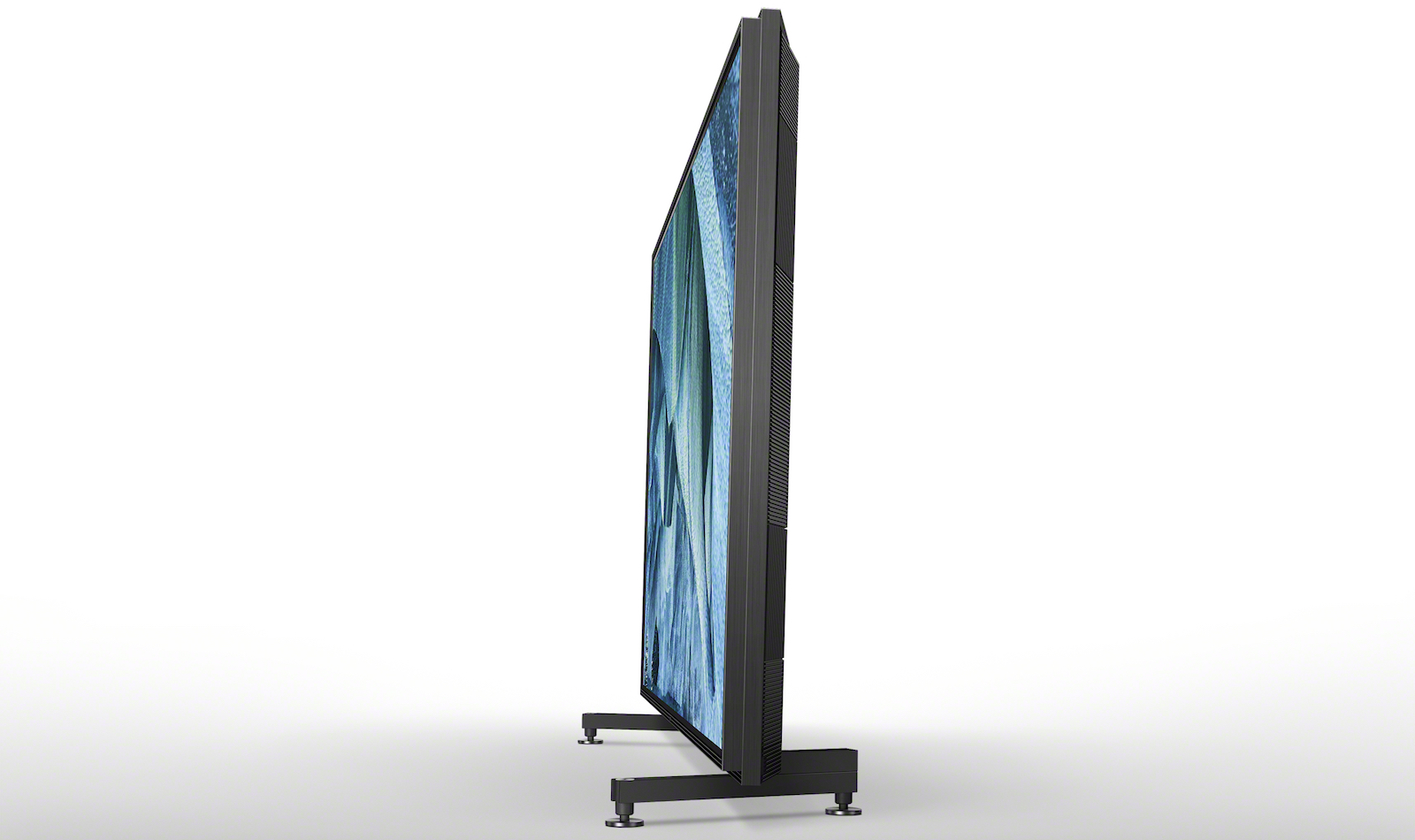
While we could happily watch the 8K demo footage for days, we also have to test the ZG9 with actual content, so we pop the 4K Blu-ray of It (2017) into our Oppo UDP-203. It contains lots of dark scenes, many of which also feature bright highlights and lots of shadow detail. Having been concerned about the ZG9’s backlight when we first saw it in action at CES in January, we are keen to explore this aspect of the performance.
The good news is that the ZG9 delivers a convincing black performance. An OLED TV would, predictably, beat it for outright black depth, but the ZG9’s blacks looks black when viewed in isolation – and that’s crucial to distraction-free enjoyment of a TV show or film.
Also crucial is backlight consistency. Thankfully, the ZG9 only has slight variances in shade visible in the black bars of a widescreen presentation, in extreme circumstances and under quite close scrutiny. In other words, during normal viewing you aren't aware of the backlight’s operation, and that’s not something we could say when we reviewed Samsung’s QE85Q900R.
With the backlight not causing distractions, your attention is naturally focused on the bright beams of light cast by the torches of The Losers Club, and on the horrifying details lurking in the shadows. Owners of lesser TVs miss out on so much.
At no point are your eyes fooled into believing you’re watching a native 8K presentation, but the ZG9 gives nothing away to even the best 4K models in terms of sharpness, detail or control. Given the amount of upscaling that’s going on, that’s impressive in its own right.
With this disc we also get to enjoy the ZG9’s cracking colour balance and marvellous motion processing. We recommend against using the Cinema picture presets on account of their softness, sepia tinge and lack of dynamism, instead opting for Standard with Live Colour enabled or, in the case of a Dolby Vision presentation such as It, a slightly toned down version of Vivid.
With Vivid selected, the film looks stunning, combining bright, warm hues with a natural, neutral balance and a good deal of nuance and subtlety to shades. Pennywise’s bright red balloons stand out just as intended against the more even handed palette of the general scenery, while the warmth to the protagonists’ sun-kissed skin is spot on, and there’s great detail in their freckles and blemishes.
The motion processing is also superb, with Sony working its trademark magic to sharpen and smooth motion without introducing fizz around edges of complicated patterns, or making everything look overly processed. Our preference here is to use the default Custom mode, rather than Auto, as the latter can come a little unstuck with tricky bits of motion.
With Custom selected, there’s control and clarity without added shimmer. Motion has long been Sony’s forte, and the move to an 8K panel thankfully hasn’t changed that.
You’ll still be watching a lot of Full HD (1080p) and even some standard-def (576p) content for the foreseeable future, but given the percentage of the picture that the TV is having to generate, the ZG9’s performance with these low resolutions is little short of miraculous.
The Full HD Blu-ray of True Grit is clean and detailed, with impeccably balanced colours (we recommend turning Live Colour off for most SDR content), while an old DVD of Peep Show is amazingly watchable, all things considered: a bit of shimmer and noise creeps in to tricky patterns and flat areas of colour, but the overall picture is good and certainly no worse than that from most native 4K models.
Sound
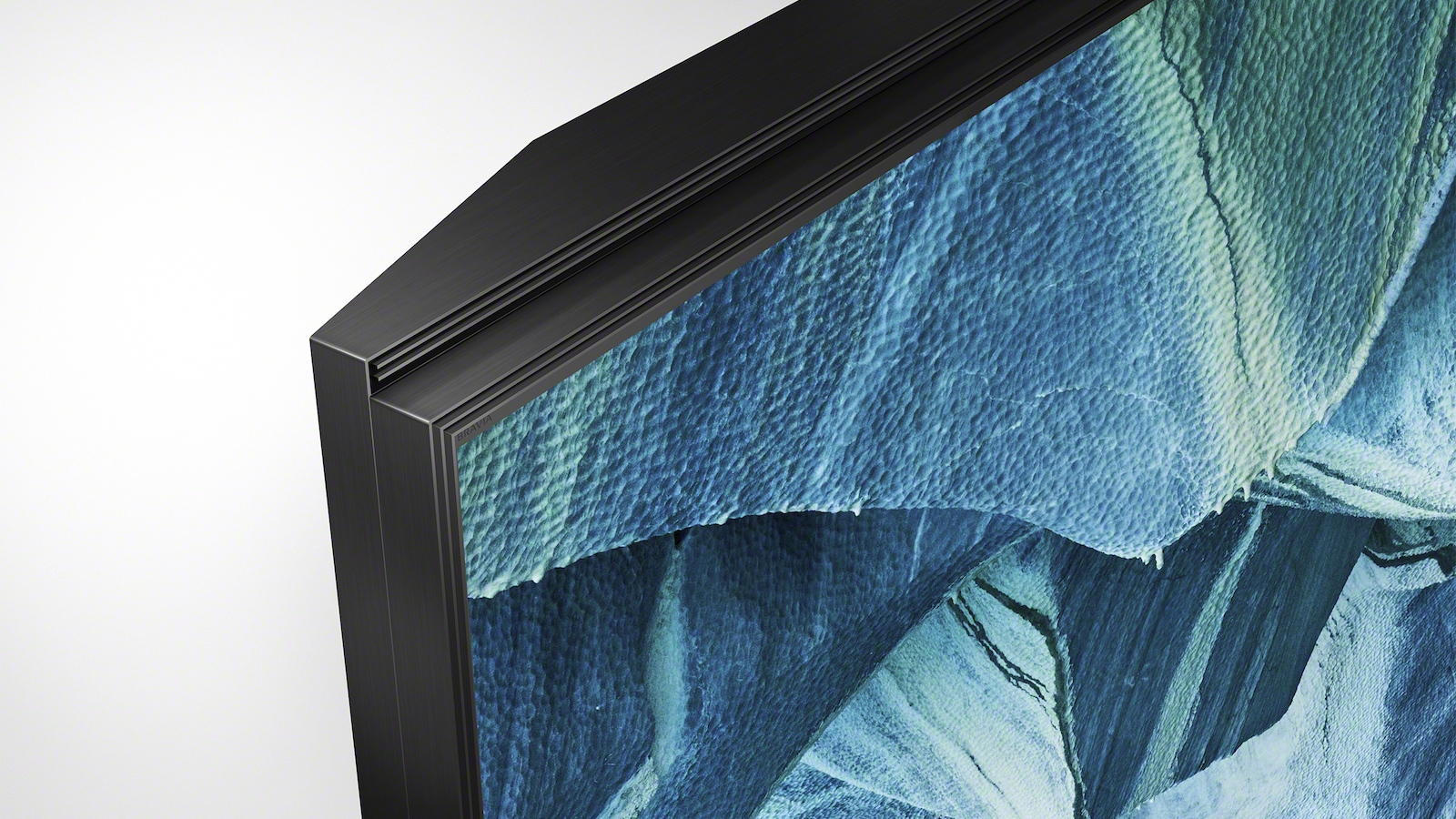
In recent years, Sony has developed its ‘Sound-from-Picture’ concept. With OLED TVs, that is achieved by ditching traditional speakers and using actuators to vibrate the screen to generate sound, but with a backlit LCD set that solution isn’t possible.
Instead, Sony has integrated four sets of three, forward-firing speakers into the bezel of the telly and added four woofers around the back, and the results are impressive.
This is undoubtedly one of the best-sounding TVs available. It combines directness and clarity of voices with a wide, open soundstage, precise placement of effects and a bottom end that’s weighty and deep by TV standards, but doesn’t have the pudginess of those models that boost bass without having the drivers capable of doing it justice.
The sound does appear to be coming from the screen, or at least around it, rather than from the bottom as most rivals do. Sony’s OLEDs will tie sound to picture even more effectively, but this isn’t far off that and is weightier and fuller bodied.
It’s a dynamic delivery, too, capable of delivering the drama of an exciting soundtrack, and while treble is twinkly, it’s also nicely balanced so as never to become bright or otherwise distracting. There’s plenty of height to the sound, helping deliver an Atmos-like effect. That said, the sound doesn’t wrap around you in the way of well implemented virtual surround sound.
You could beat the ZG9’s audio with a soundbar, but it needs to be a good one. Most TVs are beaten for sound by almost any soundbar, but to significantly beat this Sony you’d need to spend a bit – the company’s HT-ST5000 would make a good partner.
Alternatively, you can integrate the ZG9 into a full surround system: there are standard speaker terminals on the rear, allowing it to be used instead of a traditional centre speaker. We love this as a concept, but even the best home cinema amplifier will struggle to tonally match the ZG9’s delivery with that from the traditional speakers flanking it. That said, for some the added neatness will more than make up for any tonal imbalance.
Verdict
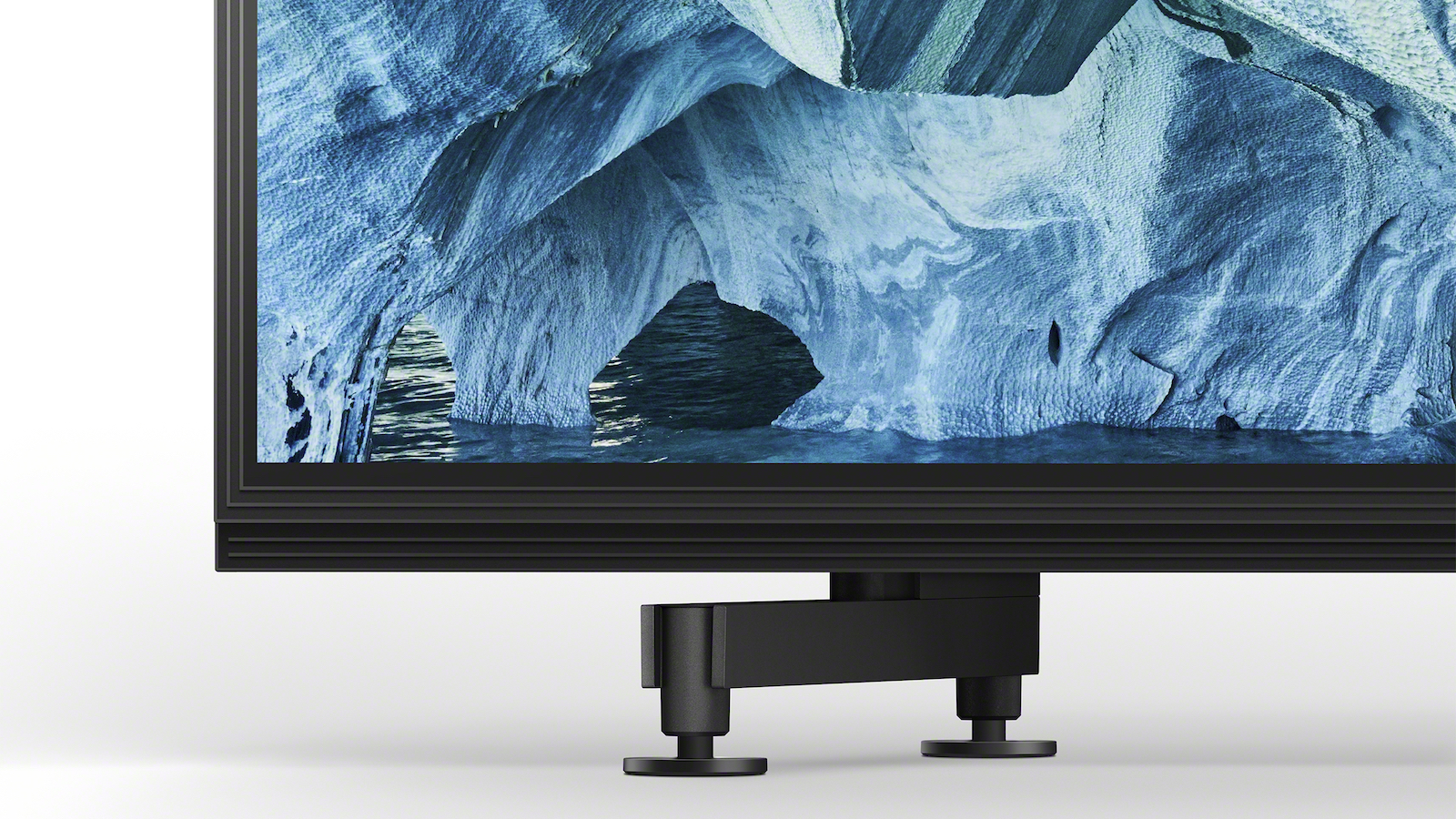
With no 8K content available, most people will be horrified by the thought of spending this amount on an 8K TV. When an 85in 4K TV can be bought for under £5k, it's hard to justify spending £14k on a resolution you won’t use for a long time.
But if cost is not a concern, and you want to be at the bleeding edge of TV tech, the Sony ZG9 is the TV to buy. Unlike the Samsung Q900R, which was in some ways weaker than its own 4K siblings, there’s almost no downside to the performance of the ZG9: it produces a stunning but effortlessly balanced picture, and it sounds good, too. The fact that it boasts a striking, attention-grabbing design also does it no harm.
We’re not advocating that everyone goes out and buys an 8K TV now. While they’re as pricey as they currently are, the best approach is to wait and see. But if you must have 8K and you’ve got pockets deeper than the Mariana Trench, you should check out the ZG9.
SCORES
- Picture 5
- Sound 5
- Features 5
MORE:
What Hi-Fi?, founded in 1976, is the world's leading independent guide to buying and owning hi-fi and home entertainment products. Our comprehensive tests help you buy the very best for your money, with our advice sections giving you step-by-step information on how to get even more from your music and movies. Everything is tested by our dedicated team of in-house reviewers in our custom-built test rooms in London, Reading and Bath. Our coveted five-star rating and Awards are recognised all over the world as the ultimate seal of approval, so you can buy with absolute confidence.
